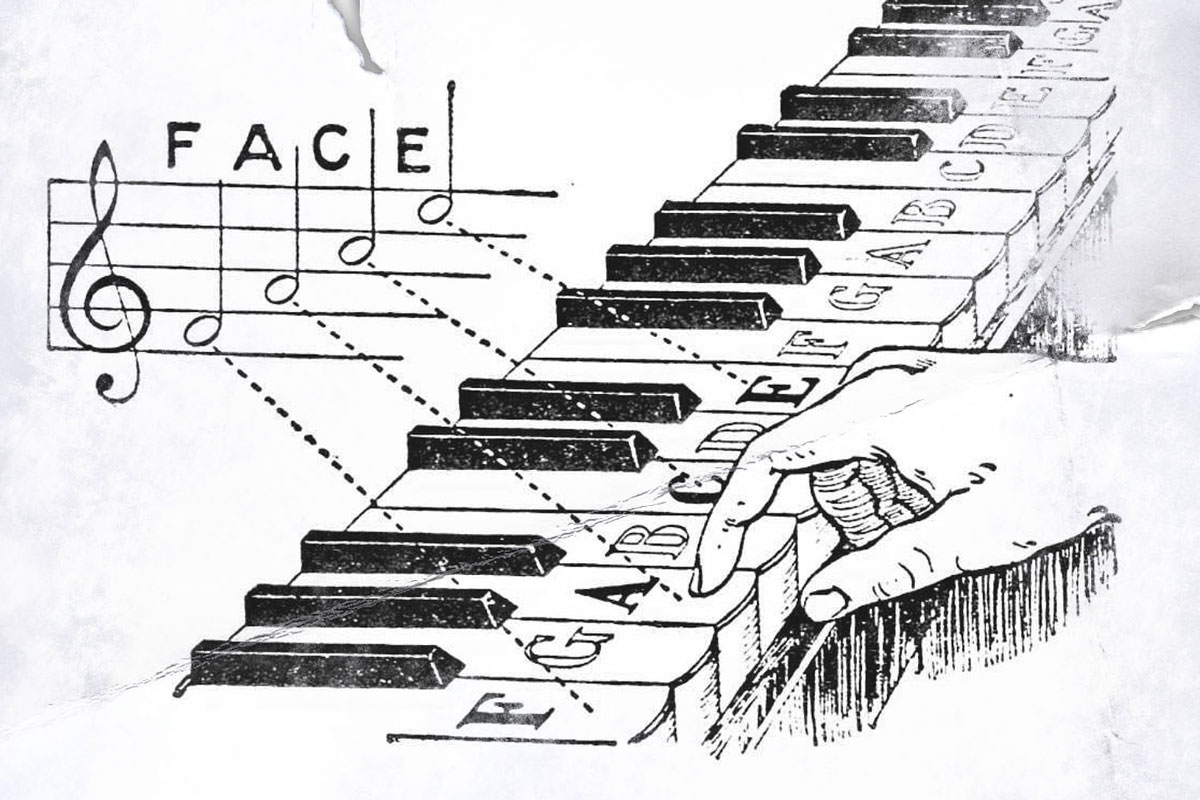Unfortunately, most students start and end their musical lives by being taught the abstract, left-brain subject of music notation…
… without ever experiencing the concrete right-brain reality of making music.
Also see: Failures of Music Education
A Typical Piano Lesson
Teacher puts the following music in front of us and asks us to play…

Being an eager and trusting student who doesn’t know any better, I do the following–because it’s how I was taught since I was a puppy:
“Hmmmm. Let’s see (eyes fixed firmly on the first and topmost dot). The first note is… wait… start with the bottom line on the treble staff and say Every Good Boy Does Fine… Every (point at first line) Good (point at second line) Boy (point at third line) Does (point at fourth line). Yes! D… That’s it! But which D? Hmmmm?! Let’s see… Middle C is down here (as I point to the imaginary line below the treble staff) called middle C, so that’s makes this the D above the C that’s above middle C, so I take my eye off the music and fix them on middle C of the keyboard that I know so well, then I count up an octave C to the next C plus one step is D. D! Got it! Ok. Now that I have that one, the next note is… Argh!!!”
It should be crystal clear that you never, ever want to read music like this… even as a beginner!
There are at least ten serious problems with this approach:
- You should never use a crutch like “Every Good Boy Does Fine” or “F-A-C-E” to learn where the notes are. If you rely on these crutches, you will never learn to walk on your own.
- It is ridiculous to read music “one-note-at-a-time”. This is the equivalent of trying to read English “one-letter-at-a-time”.
- Naming things and counting things consumes an enormous amount of your limited brain capacity that would be better spent on more important things like looking for meaningful patterns.
- Reading music this way is mentally exhausting and overwhelming, leaving you with no time and energy to focus on the important musical things like phrasing, articulation, dynamics, and interpretation.
- While you’re overwhelmed “reading”, you’re not listening. This is the valley of death for a musician.
- While it is possible to become very skilled at translating music symbols into correct answers on tests and digital gymnastics at the piano, it is possible to do so without any musical understanding whatsoever.
- Learning and performing music this way is like “reading” and reciting a foreign language phonetically or like painting by number.
- Trying to read music this way makes you dependent on brute force memorization.
- Reading music this way guarantees a performance that is robotic and uninspiring.
- Trying to read music this way, no matter how conscientious you are, will leave you frustrated and feeling defeated, stupid, and untalented.
But don’t despair… There’s a better way!
learn more… The Musical Way to Read Music

Leave a Reply